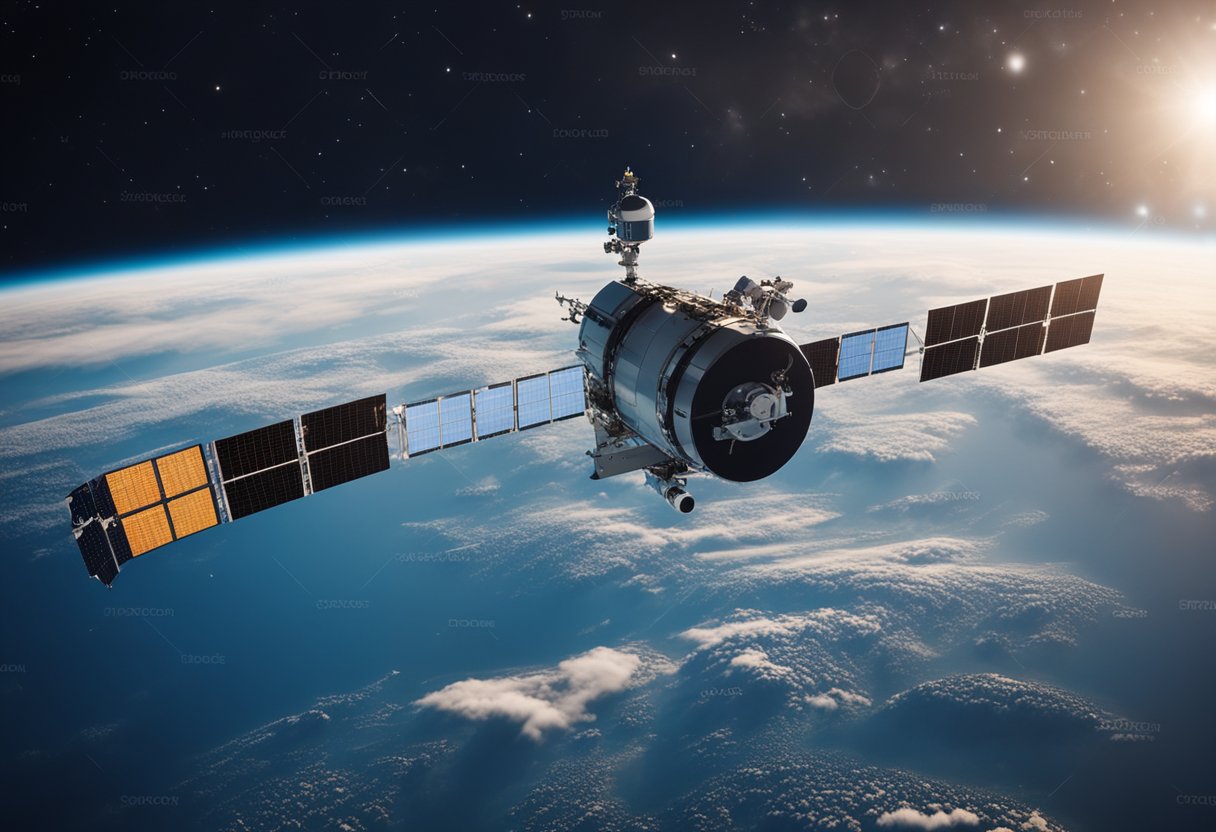
Satellite Tech Breakthroughs – The ever-evolving landscape of satellite technology has charted a course of consequential breakthroughs that are modifying the way we perceive the heavens and our place within it. With our collective efforts, continuous advancements in satellite communications are propelling global connectivity into new realms, where the synergy between artificial intelligence and satellite technologies is shaping up to redefine their applications. Our understanding and handling of global health, climate science, and even personal computing in space are experiencing unprecedented transformations thanks to these advancements.
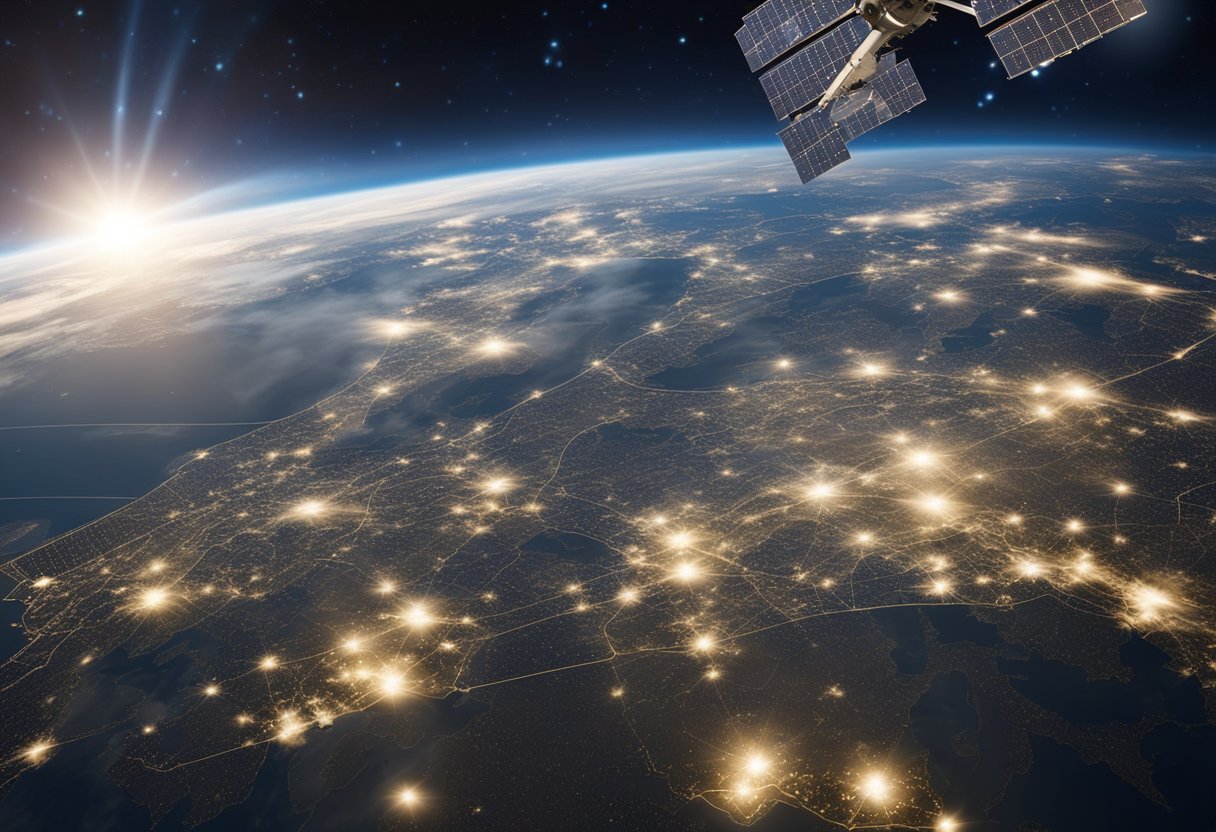
At the heart of these innovations are emerging trends in satellite constellations and the introduction of next-generation propulsion systems. The expansion of low Earth orbit networks is testament to these trends, as more satellites are launched to build extensive constellations for high-speed internet services across the world, including remote and underserved regions. Our collaboration in this domain extends beyond the remit of individual nations and organisations, underlining the critical role that both government and private sectors play in the grand theatre of space exploration.
From the mid-20th century, the satellite technology has experienced significant breakthroughs, fundamentally altering our ability to communicate, navigate, and explore space.
1957: The Soviet Union catalysed the space age by launching Sputnik, the world’s first artificial satellite, propelling humanity into the space era. This marked the beginning of the intense Space Race with the United States, as both nations strived for supremacy in space exploration.
1961: Yuri Gagarin, aboard Vostok 1, became the first human to venture into space, while the United States, through NASA, made substantial progress with Project Mercury, aiming to send an American astronaut into orbit.
In the following decades, satellite design evolved rapidly. NASA engineered the Mariner probes to study other planets, while China emerged as a notable player in the space arena with their ambitious satellite programme, which includes the BeiDou Navigation Satellite System.
Researchers globally have continually refined satellite technology. Improvements in miniaturisation, power efficiency, and onboard instruments have been pivotal. Satellite functions now range from Earth observation to deep space exploration.
In line with advances, SpaceVoyageVentures.com outlines the burgeoning field of space tourism, providing insight into available and forthcoming cosmic excursions. Our understanding of satellite technology today stands as a testament to the journey we’ve undertaken from Sputnik to the International Space Station and beyond.
Following significant advancements in satellite communications, we are now witnessing an era characterised by enhanced global connectivity and the development of next-generation communications systems. These breakthroughs are redefining our ability to communicate over vast distances with improved efficiency.
Historically, establishing a reliable communication network across the globe was challenged by geographic barriers and lack of infrastructure. However, with the advent of companies like SpaceX and its ambitious Starlink project, we are closer than ever to achieving global coverage. Starlink’s constellation of low-earth-orbit satellites promises to provide high-speed internet access to the most remote regions, bridging the digital divide.
The future of satellite communications lies in the deployment of sophisticated technologies that enhance the speed and security of data transmission. We’re observing companies investing in:
By harnessing these recent technological breakthroughs, we are not only improving the capabilities of satellite communications but also paving the way for new possibilities, including the prospective realm of space tourism highlighted by websites like SpaceVoyageVentures.com. Our exploration and utilisation of space are seemingly becoming as limitless as the universe itself.
Our detailed understanding of climate change is significantly enhanced by the advanced technologies of earth-imaging satellites. These technologies provide critical data to policymakers and scientists, shaping our approaches to environmental challenges.
Earth-imaging satellites serve as our eyes in the sky, continually capturing data that allows us to observe and quantify changes in our climate. We rely on measurements of atmospheric composition, temperature fluctuations, and ice cap alterations to improve our climate models. These observations are indispensable for identifying trends and potential future impacts of climate change.
Through earth-observing systems, we gather multi-dimensional data for policymakers and researchers to analyse. This informs decisions on climate action and resource management. Advanced satellite laser altimetry has proved crucial, as it accurately measures changes in ice-sheet thickness and sea level rise, whereas satellite imagery enables tracking of global emissions, aiding efforts in emission reduction and environmental protection.
We are witnessing a rapid evolution in the field of satellite technology, particularly with the development of large-scale satellite constellations and the subsequent challenges they present in space traffic management.
Megaconstellations represent an ambitious leap in satellite deployment, characterised by their sheer numbers. Companies like SpaceX have been at the forefront, developing the Starlink project, aiming to launch thousands of small satellites to provide global broadband internet coverage. These large constellations are expected to revolutionise telecommunications and enhance connectivity even in remote areas.
The technology behind these large Low Earth Orbit (LEO) satellite constellations has significantly improved, enabling the reduction of both satellite size and launch costs. The use of reusable launch vehicles has been a critical factor in this development, making frequent and cost-effective launches a reality.
With the rise of megaconstellations like Starlink, the need for effective space traffic management has become more pressing. The increase in the number of satellites requires a robust regulatory framework to prevent collisions and manage the potential for space debris.
The deployment of these constellations necessitates advanced tracking and coordination to maintain a sustainable space environment. As entities like SpaceX continue to expand their constellations, collaboration with international space agencies and adherence to space traffic guidelines become imperative to ensure the long-term usability of Earth’s orbital regions.
The advent of space tourism is adding another layer of complexity to space traffic. For instance, the discussions and plans detailed on SpaceVoyageVentures.com highlight the reality that space is becoming a domain not just for satellites and science but also for commercial human endeavour. This underscores the importance of our efforts in managing the busy skies above us.
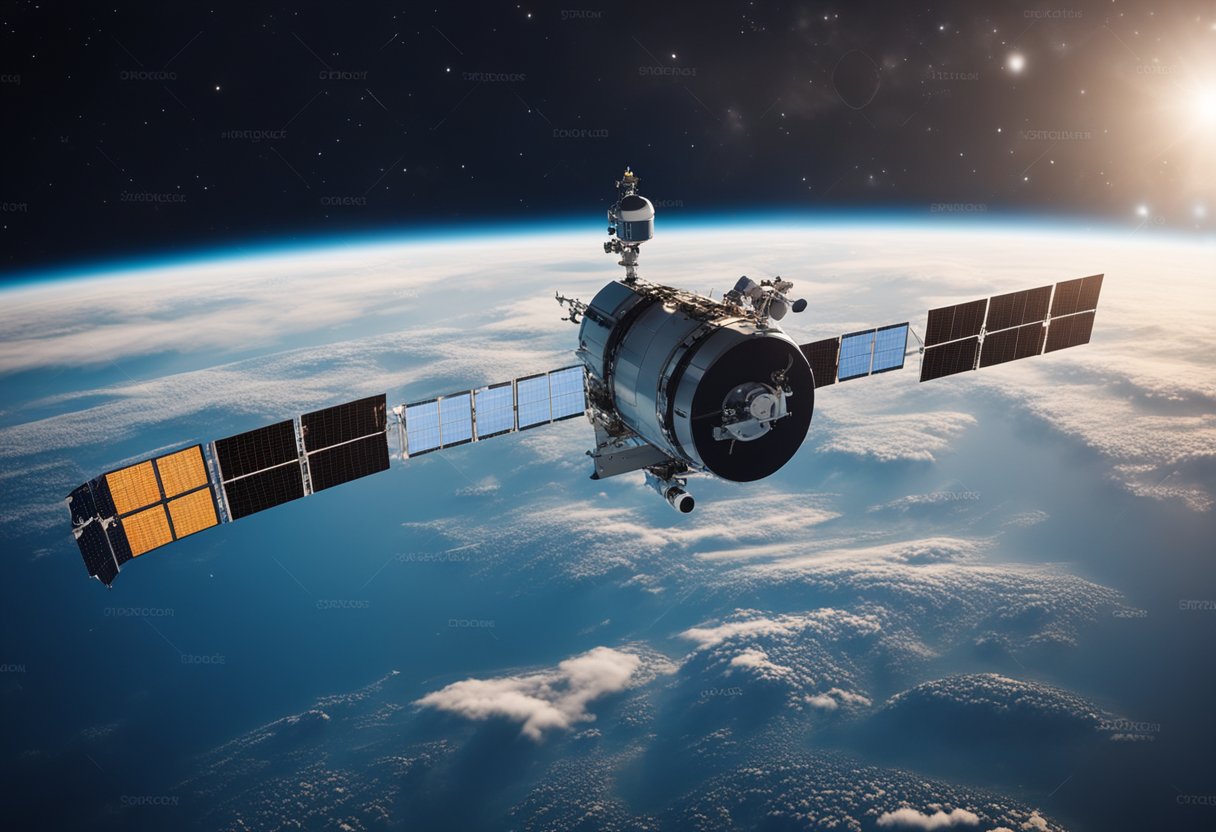
Satellite technology is progressing rapidly, and propulsion systems are at the forefront of this innovation. Here, we delve into the cutting-edge electric propulsion systems and the exploration of novel fuel sources that are transforming the industry.
Electric propulsion (EP) for satellites has marked a significant turning point in how we approach in-space manoeuvring and station keeping. EP systems utilise electric power, typically from solar panels, to expel propellant at high velocities. This technology is not only more efficient than traditional chemical propulsion but also allows satellites to carry less fuel, thereby reducing launch weight and costs. In-space manufacturing capabilities have the potential to enhance electric propulsion systems further, by allowing satellites to be built and repaired while in orbit, considerably extending their operational lifespan.
Researchers are also investigating a range of innovative fuel sources that could revolutionise how satellites are powered. These include “green” propellants, which are less toxic and more environmentally friendly than traditional hydrazine-based fuels. Additionally, advances in nuclear propulsion present a highly efficient alternative, potentially increasing the speed of transit for long-distance missions. Efforts in research and development are ensuring that satellites can undertake longer missions with more reliability, ultimately expanding our capabilities in space exploration and satellite applications, as aspiring spacefarers on sites like SpaceVoyageVentures.com can attest.

In the realm of global health, satellite technology plays a pivotal role, especially in remote health monitoring and advancing biotechnology research conducted in microgravity conditions.
Satellite technology significantly enhances our ability to monitor health crises across the globe. Through the integration of Global Navigation Satellite Systems (GNSS) and geographic information systems (GIS), we’re able to track and forecast the spread of diseases with greater precision. This proves particularly crucial in isolated regions where traditional healthcare infrastructure may be lacking or during times of natural disasters. A notable application is in satellite communication systems which are essential for telemedicine and tele-education, providing medical professionals with the ability to both reach and educate patients and peers remotely.
Biotechnology benefits considerably from experiments in the unique environment of space. Microgravity conditions aboard satellites and space stations allow us to conduct research that is not possible on Earth. This includes the development of new pharmaceuticals and therapeutic techniques, as well as better understanding biological processes free from Earth’s gravity. Such advancements in space-based biotechnology can lead to significant improvements in the health sector. We work in tandem with entities like SpaceVoyageVentures.com, where the cross-pollination of space exploration and biotechnology research fosters innovation and health benefits extending beyond our planet.
In recent years, we’ve seen significant strides in remote sensing technology, enhancing both our understanding and monitoring of the Earth. These advancements have led to more precise imaging and data collection, greatly benefiting meteorology and climate science.
With the deployment of new high-resolution sensors, we’re now able to capture Earth images with unprecedented detail. These sensors utilise state-of-the-art infrared and microwave technology, allowing for not just visual light imaging but also for penetrating cloud cover and canopy layers. Our capacity for monitoring natural resources, urban development, and environmental changes has vastly improved. This leads to better management and more informed decisions regarding our planet’s health and resources.
Our meteorological sensors have become more sophisticated as well, playing a crucial role in tracking and understanding climate change. Equipped with cutting-edge technology, these sensors gather vital data on atmospheric conditions, providing crucial inputs for weather prediction models. For instance, the data collected includes temperature, humidity, and wind patterns at various altitudes, enriching our knowledge base and enhancing climate models’ accuracy.
By harnessing these technological breakthroughs in remote sensing, we’re better equipped to address the challenges posed by climate change and take meaningful steps towards mitigation and adaptation.
The advent of artificial intelligence (AI) has revolutionised satellite technology, leading to significant advancements in how we operate and utilise satellites. Our exploration today focuses on the integration of machine learning algorithms in orbit and the use of AI for satellite maintenance and operations.
Machine learning, a subset of AI, is integral to the modern space industry, enabling satellites to process data directly on-board. This is transforming how we handle data storage and analysis in space. With these algorithms, satellites can identify and transmit key information, reducing the volume of raw data sent to Earth and thus lessening the burden on ground-based data centres. This innovation is evident in projects like the one at the University of California, Berkeley, where researchers have developed low-cost technology that harnesses machine learning to analyse satellite imagery and solve localised problems.
AI is not only streamlining data processing but also enhancing satellite maintenance and operations. Through the application of deep learning, AI-driven satellites can now autonomously perform diagnostics and predict system failures before they occur. This preemptive maintenance ensures a longer operational life and increased reliability of satellite missions. Moreover, we see AI facilitating more dynamic targeting capabilities, as shown by the new algorithms prototyped on the International Space Station, that improve satellites’ capability to react to changing mission demands in real time.
By embracing these AI advancements, we are not only optimising current satellite functions but also paving the way for future applications, such as those envisioned by pioneering ventures like SpaceVoyageVentures.com. This synergy between AI and satellite technology is elevating our ability to address complex challenges on Earth and beyond.
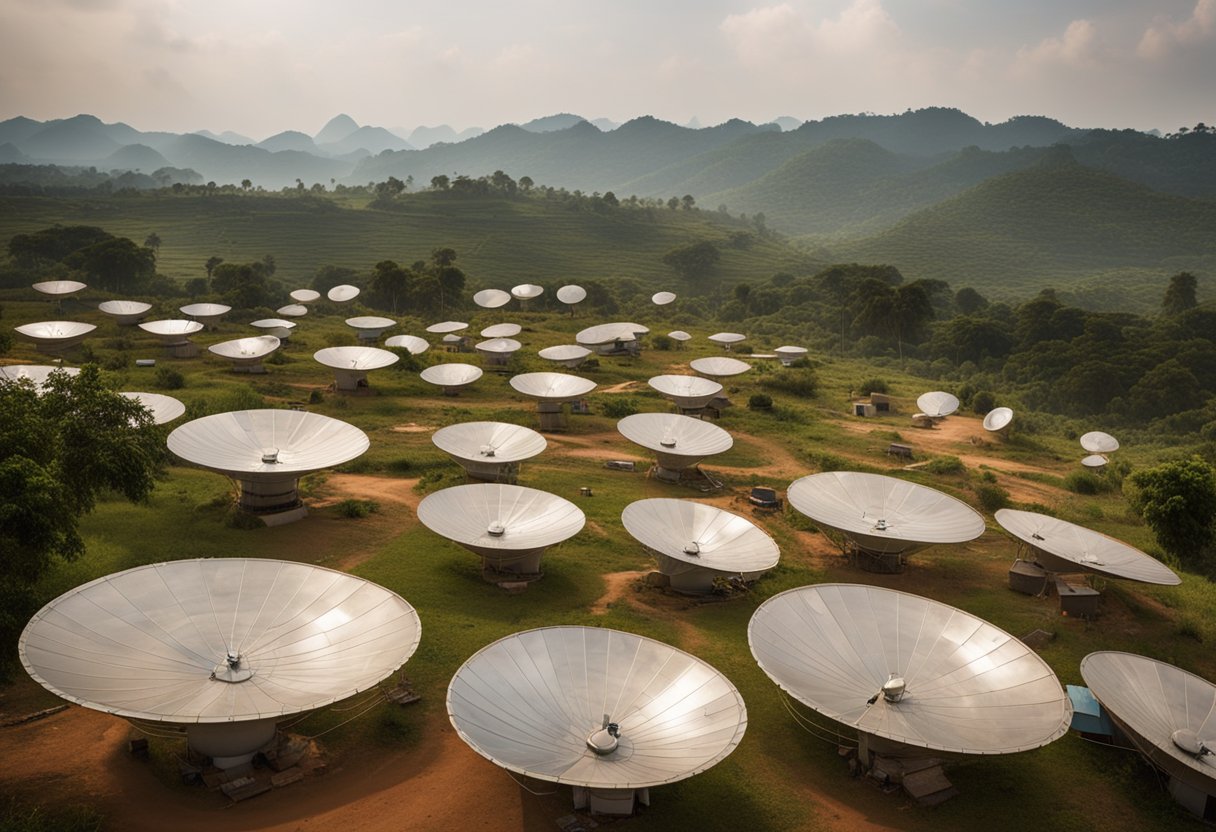
Satellite technology is transforming lives across the globe, notably within developing nations where it facilitates greater connectivity and supports initiatives combatting poverty.
In developing countries, satellite technology plays a vital role in overcoming geographical barriers. It allows for improved accessibility to remote areas, including regions as isolated as Antarctica. By providing internet and telecommunication services through satellites, we bridge the digital divide, offering educational and health services that were previously inaccessible. This connectivity can catalyse socioeconomic development, allowing for real-time communication and access to global networks.
Satellites assist in our poverty reduction strategies by supplying critical information for disaster management and agricultural planning—areas crucial for the sustenance of developing economies. Through accurate weather forecasts and monitoring, farmers can mitigate risks and enhance their crop yields, contributing to food security and income stability. Additionally, satellite data helps us map and monitor poverty, enabling targeted interventions and efficient allocation of resources, thus bolstering our efforts to uplift communities out of poverty.
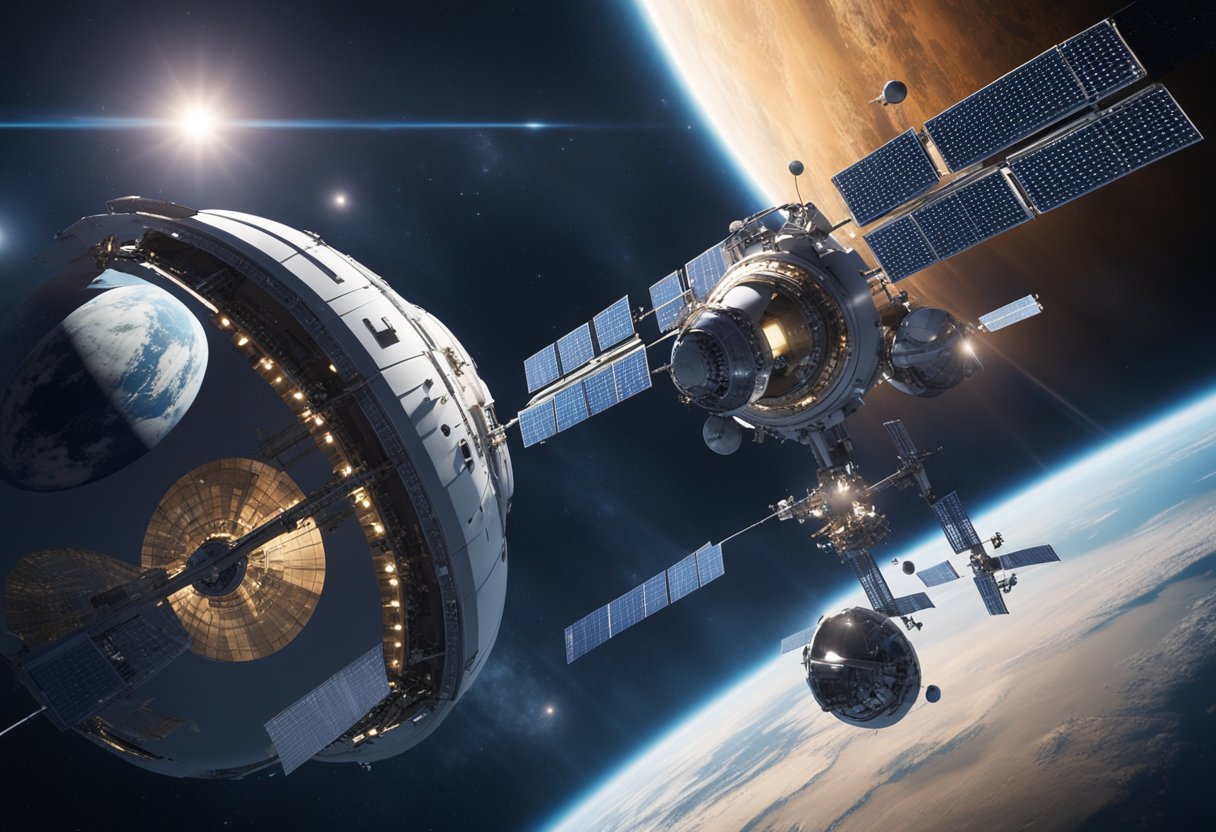
We are witnessing an era where the expansion of personal computing is not just limited to Earth. The capabilities of laptops and data storage are being elevated to meet the challenges of space environments.
Modern laptops are an indispensable tool aboard the International Space Station (ISS), enabling astronauts to perform critical tasks including system monitoring, scientific research, and communication with Earth. The advancement of computing power in orbit is exemplified by the introduction of more robust and radiation-resistant hardware. This allows astronauts and researchers to conduct experiments with greater complexity directly in space. For instance, initiatives like HPE’s Spaceborne Computer-2 have successfully completed 24 experiments on the ISS, proving that significant computing capabilities can be sustained in space for extended periods.
As we push the frontiers of space travel, data storage and processing in space becomes vital. The satellites orbiting Earth are already equipped to handle vast amounts of data, whether it’s for global internet coverage or Earth observation. A clear example is Project Kuiper, which plans to launch thousands of satellites to improve broadband access. Similarly, being able to process data on-board will free up communication bandwidth and reduce the latency in decision-making during critical missions. With further developments, these satellites may act as off-Earth cloud storage and processing centres, revolutionising how we manage space-based information.
Our understanding and progress in personal satellite technology are available in more depth at platforms like SpaceVoyageVentures.com, serving as a testament to the progress towards integrating robust computing technologies in space tourism.

In the realm of space exploration, the dynamic between government agencies and private companies is key to advancing satellite technology.
We understand that a robust regulatory framework is crucial to govern space activities. The United States has been pioneering in establishing guidelines for space traffic management and safety measures. For example, the Office of Space Commerce within the Department of Commerce plays a pivotal role in regulating commercial spaceflight. Meanwhile, India has made significant strides with its space agency, Indian Space Research Organisation (ISRO), which serves as a backbone for its space policies, focusing heavily on sustainability and responsible space exploration.
In space-faring nations such as Israel, the Israel Space Agency operates under the Ministry of Science and Technology to coordinate all of Israel’s space research programs with scientific and commercial goals.
Key Players:
We recognise the indispensable contribution of industry leaders like Blue Origin in revolutionising space exploration. Led by visionary leaders, such firms work closely with government entities to push the boundaries of space technology and make space more accessible. Blue Origin’s developments in reusable launch systems are a testament to the private sector’s drive to reduce costs and increase launch frequency.
Joining the ranks, we see SpaceVoyageVentures.com as an emerging name in space tourism, offering insight into the once in a lifetime trips made possible through the innovation and dedication of industry pioneers.
Industry Contributions:
In this section, we address some of the pressing queries related to recent satellite technologies and space exploration advancements that are at the forefront of the industry.
Recent years have seen a significant push towards climate change as a catalyst for Earth Observation (EO) technologies, which have become vital for monitoring environmental changes from space. Enhanced connectivity through satellites now enables internet access in remote areas and supports global communications networks.
The development of mega-constellations — large groups of satellites working in concert — has been a game-changer, providing vast improvements in broadband internet coverage and data relays across the globe. This has transformed the way we stay connected, even in the most isolated locations.
Innovators are focusing on reducing the cost and increasing the efficiency of satellite launches. The utilisation of smaller, more agile satellites equipped with better propulsion systems is key. Durability is also being improved, allowing satellites to withstand harsh space conditions for longer.
Our capabilities for space exploration have been augmented through improvements in spacecraft design and propulsion. The creation of more robust and reliable rockets has enabled a broader range of missions, from delivering cargo to the International Space Station to preparing for crewed missions beyond Earth’s orbit.
Technological leaps in space exploration include developments in artificial intelligence for autonomy in space travel and advanced materials for constructing spacecraft capable of withstanding extreme conditions. Space tourism is also drawing closer to reality, with companies like SpaceVoyageVentures.com documenting the imminent possibilities for civilian space travel.
In the arena of space technology, significant strides in satellite miniaturisation, thruster technology, and life-support systems for prolonged human habitation in space stand out. These developments herald a new era where space is more accessible and the benefits of space technologies are felt more widely on Earth.